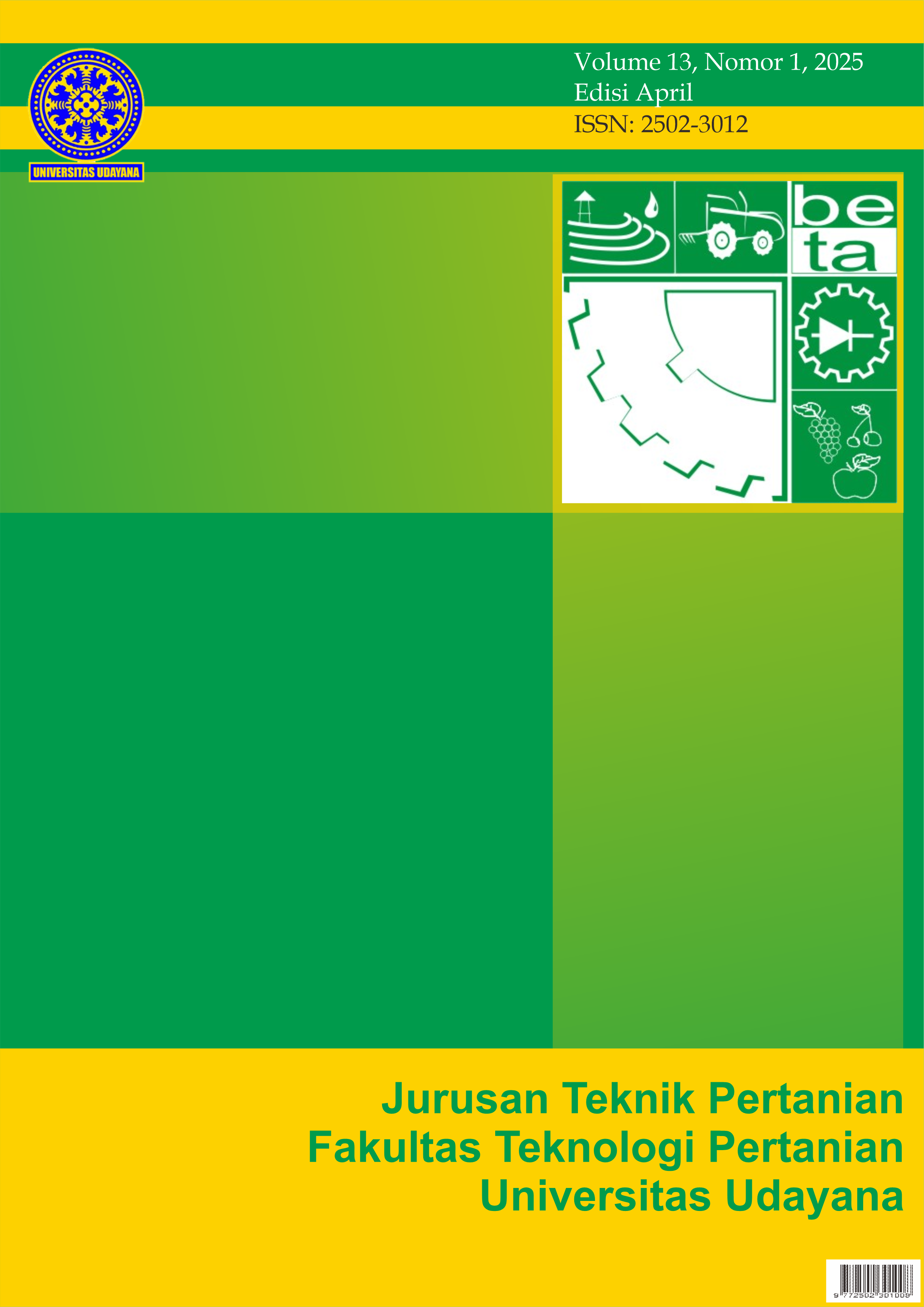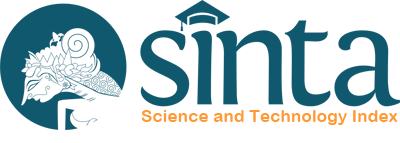Rancang Bangun Sistem Fertigasi Otomatis Berbasis Mikrokontroler dan IoT (Internet of Things)
Abstract
Abstrak
Sistem hidroponik dapat menjadi solusi dalam menghasilkan sayur-sayuran yang lebih berkualitas dan berkelanjutan. Penggunaan larutan nutrisi melalui sistem fertigasi adalah bagian penting dalam sistem hidroponik. Akan tetapi, pengontrolan alat fertigasi tersebut banyak yang dilakukan secara manual, sehingga pekerja sering kesulitan dalam menjalankan rutinitas. Tujuan penelitian ini adalah untuk merancang dan membangun sistem otomatis pada alat fertigasi yang menggunakan teknologi mikrokontroler dan Internet of Things. Metode penelitian dilakukan dengan merancang prototipe sistem fertigasi otomatis yang melibatkan perancangan fungsional dan desain struktural perangkat keras serta perangkat lunak untuk pemrosesan data. Hasil dari rancang bangun prototipe fertigasi otomatis menggunakan ESP 32 sebagai mikrokontroler, sensor TDS meter KS0429, Sensor suhu DS18B20, Sensor pH 4502C, Sensor JSN-SR04T sebagai pengukur ketinggian air, RTC DS3231 SN sebagai penentu waktu, relay sebagai saklar output, pompa air sebagai output penambah nutrisi dan air, LCD 16x2, buzzer dan button sebagai sistem pemantauan dan kontrol, serta perangkat lunak Blink sebagai sistem pemantauan melalui smartphone. Pengujian kinerja alat dilakukan dengan cara uji sensor dan uji sistem. Pengujian pada sensor TDS meter, sensor ultrasonik, sensor suhu, sensor pH menunjukkan nilai Sig. (2-tailed): 0,000 < 0,05 , berarti terdapat korelasi yang signifikan, serta nilai Pearson Correlation = 1 , berarti menunjukkan korelasi sempurna, serta hasil pengujian sistem dengan nilai RMSE = 0,042 , maka prototipe fertigasi otomatis berbasis mikrokontroler dan IoT dapat dinyatakan bekerja dengan baik.
Abstract
Hydroponic systems can be a solution in producing more quality and sustainable vegetables. The use of nutrient solutions through fertigation systems is an important part of hydroponic systems. However, many of the control of the fertigation equipment is done manually, so workers often have difficulty in carrying out routines. The purpose of this research is to design and build an automated system on fertigation equipment using microcontroller technology and the Internet of Things. The research method was carried out by designing a prototype of an automated fertigation system that involves the functional design and structural design of hardware and software for data processing. The results of the design of the automatic fertigation prototype using ESP 32 as a microcontroller, KS0429 TDS meter sensor, DS18B20 temperature sensor, pH 4502C sensor, JSN-SR04T sensor as water level meter, RTC DS3231 SN as a timer, relay as an output switch, water pump as an output to increase nutrients and water, 16x2 LCD, buzzer and button as a monitoring and control system, and Blink software as a monitoring system through smartphones. The performance test of the tool is carried out by means of sensor test and system test. Tests on TDS meter sensors, ultrasonic sensors, temperature sensors, pH sensors show value of Sig. (2-tailed): 0.000 < 0.05, meaning there is a significant correlation, and Pearson Correlation = 1, indicating a perfect correlation, and the test results of the system with RMSE = 0.042, then the microcontroller-based and IoT-based automatic fertigation prototype can be declared to work well.
Downloads
References
Pitono, J. (2019). Prospek Fertigasi Untuk Pengelolaan Hara Pada Budidaya Lada. Perspektif, 17(2), 117. https://doi.org/10.21082/psp.v17n2.2018.117-128
Pohan, S. A., & Oktoyournal. (2019). Pengaruh konsentrasi nutrisi a-b mix terhadap pertumbuhan caisim secara hidroponik ( drip system ). 18(1), 20–32.
Rosliani, R., & Sumarni, N. (2005). Budidaya Tanaman Sayuran dengan Sistem Hidroponik. 27, 1–28.
Silviani. (2022). Timbangan Berbasis Internet Of Things (IoT) Untuk Beban Dinamik Dengan Feature Forecasting Bobot (Universitas Siliwangi). http://repositori.unsil.ac.id/8527/
Syakur, A., Jumrianto, & Wahyudi. (2020). Kalibrasi Sensor Tegangan dan Sensor Arus dengan Menerapkan Rumus Regresi Linear menggunakan Software Bascom AVR. 1(1), 1–14.
Wibowo, N. S., Aziziah, M., Wiryawan, I. G., & Rosdiana, E. (2022). Implementasi Metode Regresi Linier Pada Rancang Bangun Sistem Informasi Monitoring Nutrisi Tanaman Hidroponik Kangkung. JTIM : Jurnal Teknologi Informasi Dan Multimedia, 4(1), 13–24. https://doi.org/10.35746/jtim.v4i1.186












 Jurnal BETA (Biosistem dan Teknik Pertanian)
Jurnal BETA (Biosistem dan Teknik Pertanian)


